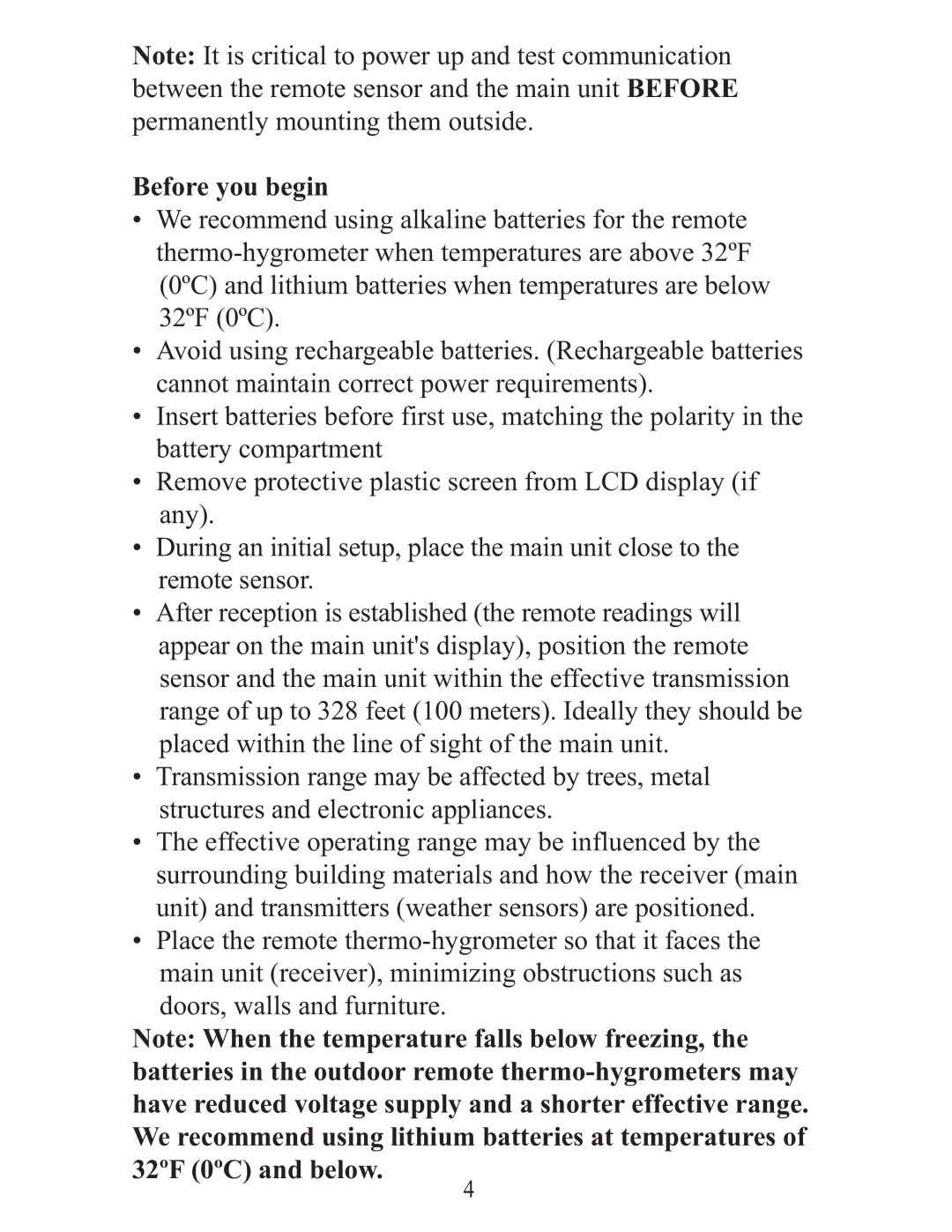
Note: It is critical to power up and test communication between the remote sensor and the main unit BEFORE permanently mounting them outside.
Before you begin
•We recommend using alkaline batteries for the remote
•Avoid using rechargeable batteries. (Rechargeable batteries cannot maintain correct power requirements).
•Insert batteries before first use, matching the polarity in the battery compartment
•Remove protective plastic screen from LCD display (if any).
•During an initial setup, place the main unit close to the remote sensor.
•After reception is established (the remote readings will appear on the main unit's display), position the remote sensor and the main unit within the effective transmission range of up to 328 feet (100 meters). Ideally they should be placed within the line of sight of the main unit.
•Transmission range may be affected by trees, metal structures and electronic appliances.
•The effective operating range may be influenced by the surrounding building materials and how the receiver (main unit) and transmitters (weather sensors) are positioned.
•Place the remote
Note: When the temperature falls below freezing, the batteries in the outdoor remote
4
